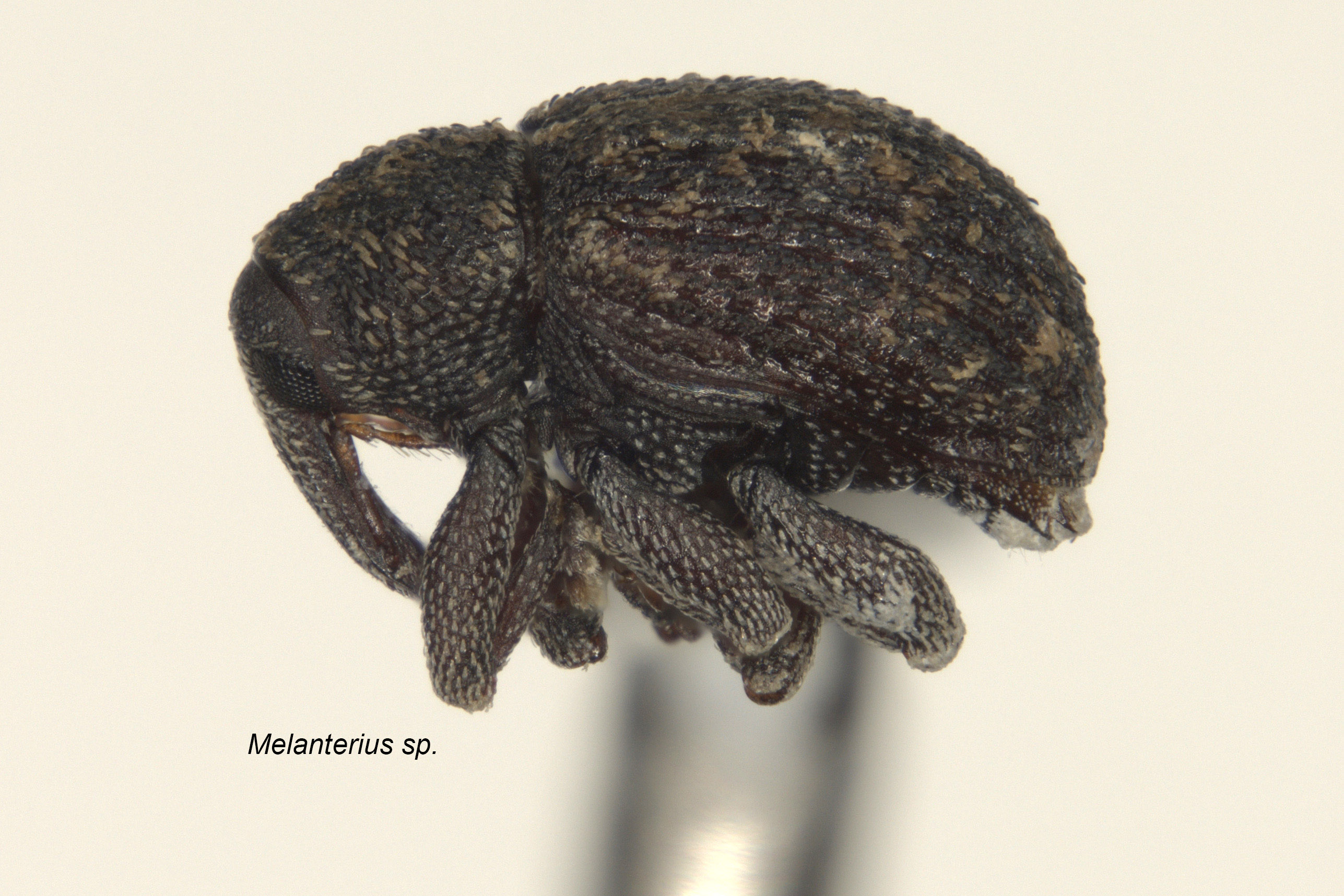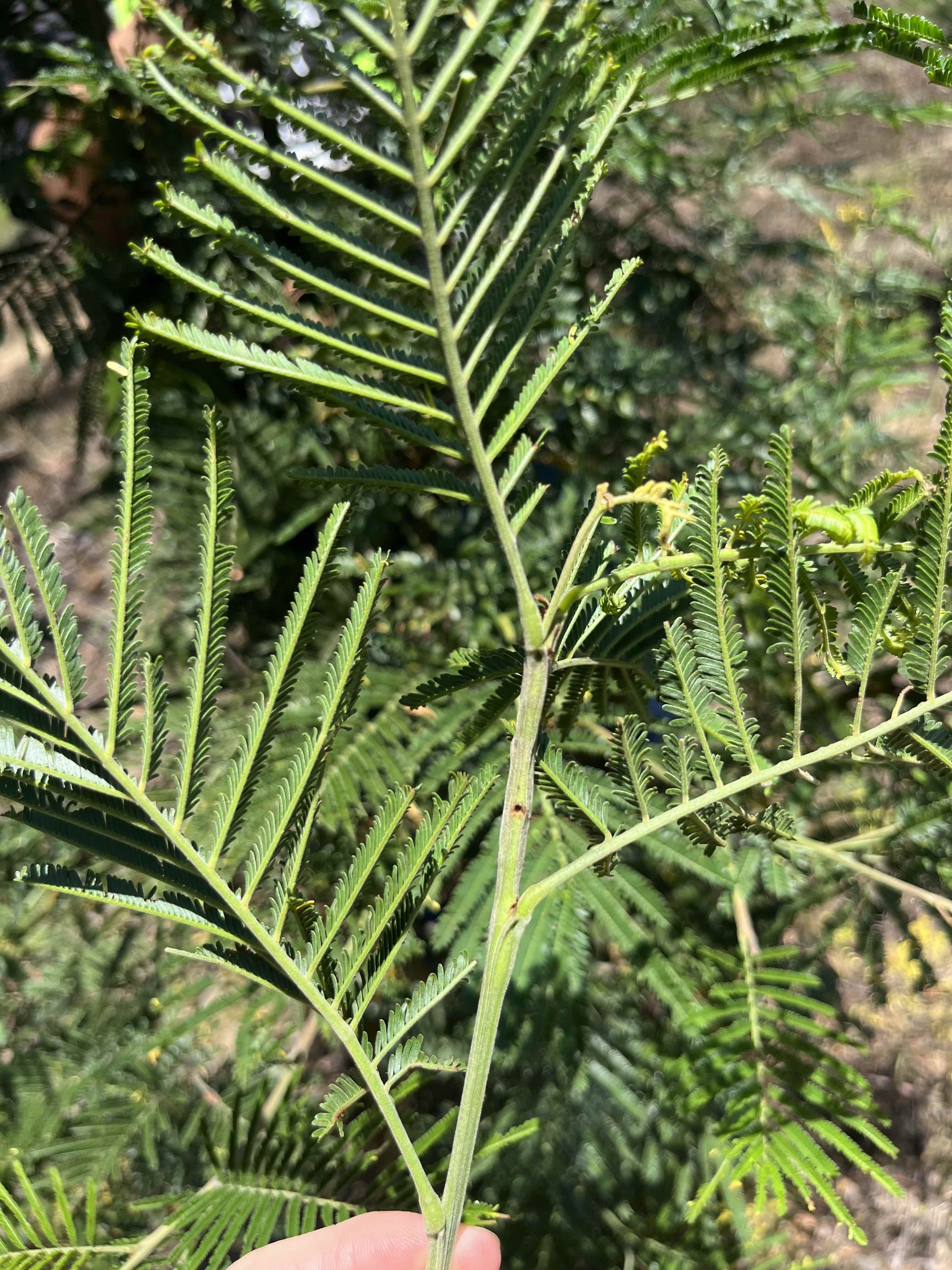Two new Wattle pests detected 2024-05-08
Two new pests of Wattle (Acacia mearnsii) plantation trees have been detected by the TPCP field extension and diagnostic services. These were detected in response to notifications from growers and while monitoring pests and pathogens in wattle stands in KwaZulu-Natal (KZN) and in, as part of the DFFE-funded national monitoring of pests and pathogens. This clearly demonstrates the importance of pest/pathogen awareness and monitoring programmes for the country’s forestry industry.
The first is a new insect pest of Wattle that was detected in the Melmoth area of KZN in February this year. Trees with excessive resin production and insect boring were noticed in various compartments. TPCP Extension Manager, Ms Sandisiwe Jali, and Prof. Brett Hurley visited the sites and confirmed the symptoms to be caused by the larvae of a wood boring beetle in the family Buprestidae. Sequence results confirmed that the larvae were in the family Buprestidae and subfamily Agrillinae, but the specimens did not match any species for which sequence data were available on the tested databases. No fungal pathogens were detected on the infested material.
At this stage it is still uncertain if the beetle is a native insect to South Africa that has now expanded its host range, or an invasive non-native species. The larvae of this family are commonly called flatheaded borers and the adult beetles are commonly called jewel beetles. Most species in this family attack stressed or dead trees, but some species can attack (seemingly) healthy trees. Some of the sites visited showed very high infestation levels, but the percentage mortality and recovery still needs to be determined, as does the specific biology of this buprestid beetle on A. mearnsii.
Logs infested by this beetle have been placed in rearing chambers at the FABI Biocontrol and Insect Rearing Facility, to try and emerge adult specimens that can be used for morphological identification, while further field visits will also be planned to monitor the extent of this pest in the field.
Symptoms of a small stem borer were also observed in young wattle stands in KwaZulu-Natal. Larvae and adult beetles were found in the tunnels and brought back to the FABI Diagnostic Clinic. Sequence data confirmed the insect as a Melanterius sp. weevil, and more recently FABI has confirmed that it is either M. inconspicuous or a closely-related species. Melanterius species, native to Australasia, are known to be seed feeders, so the finding of this species feeding on shoots and twigs is unexpected. Five Melanterius species were intentionally introduced into South Africa as biological control agents, feeding on the seed pods of different invasive Acacia species. Importantly, the sequence data confirms that the species reported here is not the same as any of those species. Infestations can result in dieback of the shoots, but the impact of infestation on the tree (e.g. growth) as well as the distribution and generally biology of the species still needs to be determined.
Click here for a brochure on the Buprestid wattle pest.
Click here for a brochure on the Melanterius sp. Wattle pest







